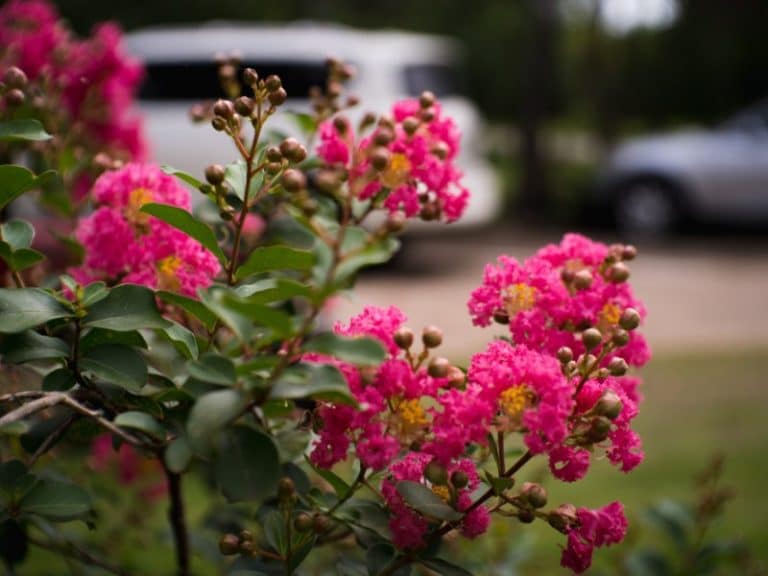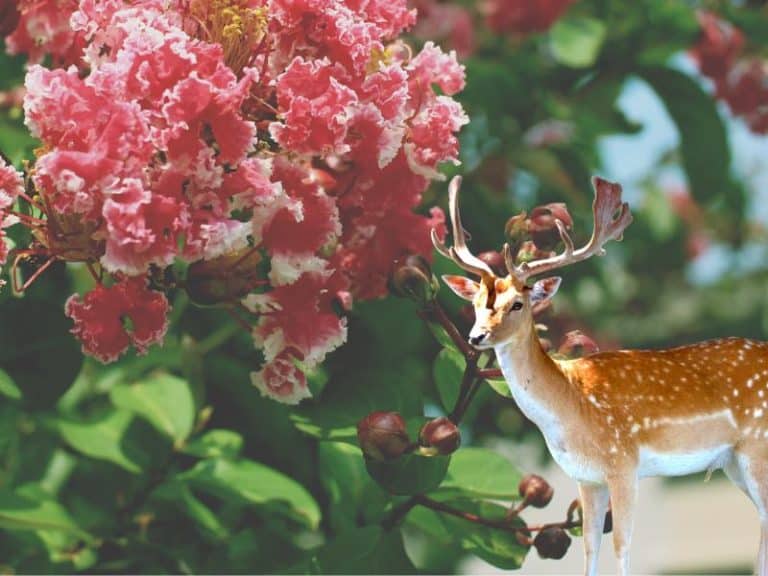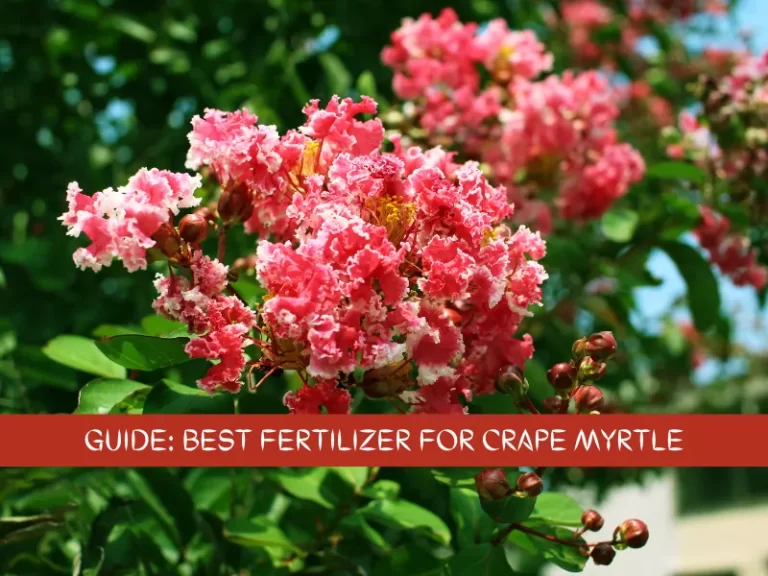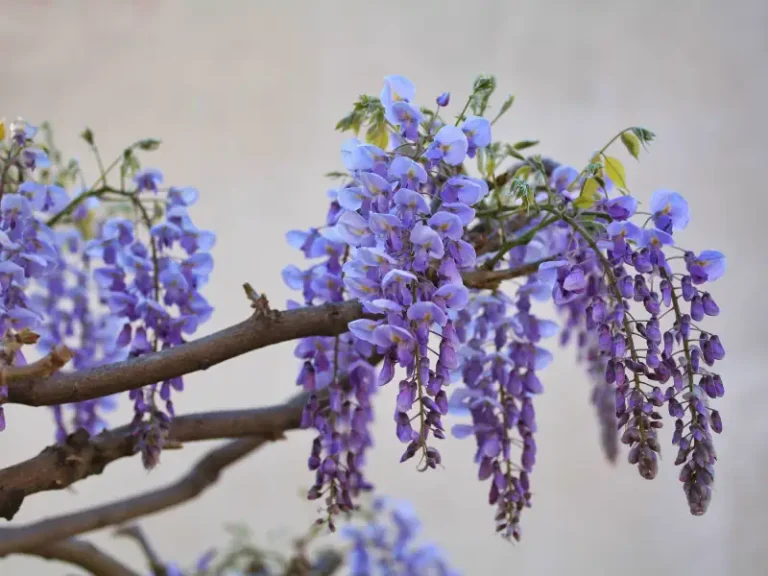Poplar vs. Birch Tree: Differences + Identification
Poplar trees (cottonwoods) and birch trees typically grow in the same geographical regions and have many similar physical features. These factors make it hard to tell these two families of trees apart. However, there are some notable differences between the two, including their heights, barks, leaves, and reproductive parts.
What is a birch tree?
A birch tree is a deciduous type of tree that typically grows to heights of 40-50 feet, depending on the species. Birch trees thrive in temperate climates, and especially next to rivers and lakes where the moist and well-draining soil conditions suit them. You can visually identify birch trees by their unique-looking barks, leaves, and blooms.
- The bark– a mature birch will feature distinctive, horizontal ridges that form on the bark of the tree. This happens due to sections of the bark peeling off in sideways strips. Meanwhile, the bark color varies depending on the species, including white, grey, silver, and yellow.
- The leaves– birch leaves are usually oval or elliptical and feature serrated edges. These leaves typically sprout in two’s from lateral sub-branches. Birch foliage features different shades of green, but turns yellow in the fall.
- The flowers– being as they’re monoecious plants, birches produces both male and female blossoms on the same tree. The male flowers, referred to as catkins, sprout as erect clusters in early fall, but grow to become droopy and up to four times longer by the time spring comes around. Meanwhile, the female flowers blossom in spring.
N/B: There are about 60 species of birch, and they all produce a small fruit called ‘samara’.
What is a poplar tree?
A polar tree is a fast-growing, deciduous tree that grows to heights ranging from 20-165 feet. Just like birch trees, poplar trees thrive in temperate climates, and in wet soil conditions next to rivers and swamps. Poplar trees are identifiable via their crowns, barks, leaves, flowers, and fruits.
- The crown– adult poplar trees have a broad canopy, with some species even growing as wide as 70 feet. This feature makes them a great shade tree for home yards and parks.
- The bark-for several poplar species, the bark is either white or silver-grey in color. While young poplars have a smooth bark, mature ones feature horizontal lenticels that appear as dark fissures.
- The leaves– many poplar species feature leaves with fine-sized serration along the edges, while in some, the foliage is maple-like. The leaves sprout in an alternating pattern along the branches and have flat petioles that make them shake often. Poplar leaves may be oval, triangular, or heart-shaped.
- The flowers– poplar trees are dioecious, with each plant being either male or female. The blooms, called catkins, sprout in spring and droop from the branches as they mature. Poplars also develop cotton-like, protective hairs post-blooming.
- The fruits– poplar trees produce capsule-like fruits that are green-red in color. Poplar fruits ripen in summer and contain very small seeds.
Poplar vs. Birch Trees – Differences
While some species of poplar have physical features that resemble those of birch trees, there are several notable differences between these two types of deciduous trees. Poplar and birch trees vary in terms of height, bark color, leaf shape/color/size, flowers, and growing zones.
Height
Poplar trees are typically taller than birch trees. Some poplar species like black and eastern cottonwoods may easily grow to be over 100 feet tall. By comparison, the largest birches are no taller than 80 feet, with the average height for mature birch trees is 40 feet.
The bark
The barks of birch trees are noticeably more detailed than those of poplar trees. Birches also feature a wider range of bark colors compared to poplars. The bark of birch trees can be white, grey, yellow, silver, or multicolored (river birch). By comparison, the bark of poplar trees is usually white or grey.
Leaves
There’s greater consistency in the shape of birch leaves across the different species, as compared to poplar leaves. Birch leaves are typically oval or elliptical. Meanwhile, poplar trees widely range in shape, including oval, triangular, rounded, and heart-shaped.
The average leaf size of these two types of trees also varies. The leaves of most birch species are below four inches long, while poplar leaves average at about 6-7 inches. Poplar leaves are also noticeably wider than birch leaves.
Flowers
Birch trees are monoecious, while poplar trees are dioecious. Monoecious plants like birch have both male and female flower parts on the same plant. On the other hand, dioecious plants like poplar produce either male or female flowers, but not both.
Poplar flowers also develop into capsule-like fruits that burst to disperse flurry seeds, hence the name cottonwoods. Birch seeds, on the other hand, lack the cotton-like hairs found on poplar seeds.
Growing Zones
While both poplar and birch trees thrive in temperate climates, the latter is more confined to the cooler climates. You’re unlikely to spot a birch tree unless you’re in the northern region of Canada. Meanwhile, poplars can thrive across a wider range of climates (USDA zones 3-9) and are, thus, grown in warmer, southern states such as Florida.
The table below summarizes the differences between poplar trees and birch trees.
| Poplar Trees | Birch Trees |
| Poplar trees grow to heights between 20-165 feet | Birch trees grow to heights between 40-50 feet |
| Grow best in northern regions, but can also be found in warmer climates in the south. | Found in Canada and the northern parts of the USA |
| The barks of poplars are less detailed than those of birches and are usually white or grey | The barks of birches are usually more detailed than those of poplars and range widely in color |
| Poplar leaves vary widely in shape | Birch leaves are typically oval or elliptical, with tapered edges. |
| Poplar leaves average 6-7 inches long and are wider than the leaves of birches | Birch leaves rarely grow past four inches long, and are narrower than poplar leaves |
| Each tree is either male or female, but not both (dioecious) | Have both male and female flowers on the same tree (monoecious) |
| Poplar flowers develop into capsule-like fruits that burst to release flurry seeds with cotton-like hairs attached to them. | Birch-flowers develop into cone-like fruits that disintegrate to release seeds. Birch seeds lack the cotton-like, hairy attachments found in poplar seeds. |
List of birch trees
- Bog Birch (Betula pumila) – typically grows up to 13 feet tall and has coral-like leaves.
- Dwarf Birch (Betula nana) – grows up to only three-feet and thrives in extremely cold climates.
- Gray Birch (Betula Populifolia) – named so for its gray-white bark with dark-brown ridges.
- River Birch (Betula nigra) – a drought-resistant birch variety with oval, dark-green leaves.
- Yellow Birch (Betula alleghaniensis) – named so for its gold-yellow bark. This birch tree can live for up to 300 years.
- Paper Bark Birch (Betula papyrifera) – named so for its white bark that strips into papery layers.
- Cherry Birch (Betula lenta) – grows up to 70-feet and has oval leaves. Forms broad canopies of up to 40 feet.
List of poplar trees
- White Poplar Tree (Populus alba) – features distinctive diamond marks on its bark and a rounded crown.
- Black Poplar Tree (Populus nigra) – has a very dark bark and can grow up to 100-feet tall.
- Lombardy Poplar (Populus nigra ‘Italica’) – has triangular leaves and a broad canopy that offers up to 60-feet of shade.
- Quaking Aspen (Populus tremuloides) – can grow up to 30 feet tall and produces red catkins during spring.
- Balsam Poplar (Populus balsamifera) – named so for its scent that’s akin to that of a balsam fir tree.
- Canadian poplar (Populus × canadensis) – has heart-shaped leaves with fine-toothed edges.
- Gray Poplar Tree (Populus × canescens) – named so for the dark gray, fissured barks on adult trees.
References
- Russell, Terence M. and Anne Marie Thornton. Gardens and landscapes in the Encyclopédie of Diderot and D’Alembert: Poplar Trees and their Characteristics
- Steven Katovich; Robert Wawrzynski; Dennis Haugen; Barbara Spears, U.S. Dept. of Agriculture, Forest Service: How to Grow and Maintain a Healthy Birch Tree





